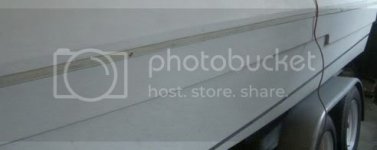Old Hickory
Active member
In "Overhauling" I posed a question concerning the correct nomenclature for a particular part of a checkmate hull. Mark suggested that Coop would probably know the answer; so I decided to let all of you guys throw in your .2 cents
Heres the thread and a pic of the part in question:
http://checkmate-boats.com/forums/showthread.php?p=431720#post431720

Here's my quote:
"I do have a technical question regarding chines. Would the "pseudo" part I was refering too be more correctly described as a "spray rail"?
I was always under the impression that the "chines" were located where the hull sides meet the bottom(a little grayer on rounded chine than it is on hard chine hulls). Today it seems that strakes are more often applied to the ridges and planing surfaces on the bottom of the hull. Where as once upon a time when boats were built using "lap strake" method; strakes ran all the way up the sides and were many times used interchangeably, descriptive wise, with chines.
Hence, why I used "pseudo strake", since it dosn't fit the modern definition of either a "chine" or a "strake". I'm guessing it's a spray rail but I'm not sure. Any help with the nomenclature would be appreciated; because when I finally post this in my blog, I want descriptions and terms to be as accurate as possible. thanks in advance"
So what is it fella's; a chine, strake, or splash rail? You may want to knock back a few before you answer:cheers
Hick
Heres the thread and a pic of the part in question:
http://checkmate-boats.com/forums/showthread.php?p=431720#post431720

Here's my quote:
"I do have a technical question regarding chines. Would the "pseudo" part I was refering too be more correctly described as a "spray rail"?
I was always under the impression that the "chines" were located where the hull sides meet the bottom(a little grayer on rounded chine than it is on hard chine hulls). Today it seems that strakes are more often applied to the ridges and planing surfaces on the bottom of the hull. Where as once upon a time when boats were built using "lap strake" method; strakes ran all the way up the sides and were many times used interchangeably, descriptive wise, with chines.
Hence, why I used "pseudo strake", since it dosn't fit the modern definition of either a "chine" or a "strake". I'm guessing it's a spray rail but I'm not sure. Any help with the nomenclature would be appreciated; because when I finally post this in my blog, I want descriptions and terms to be as accurate as possible. thanks in advance"
So what is it fella's; a chine, strake, or splash rail? You may want to knock back a few before you answer:cheers
Hick
Last edited:
